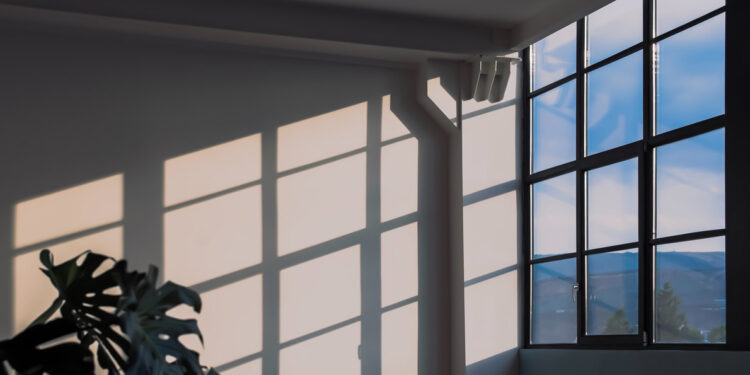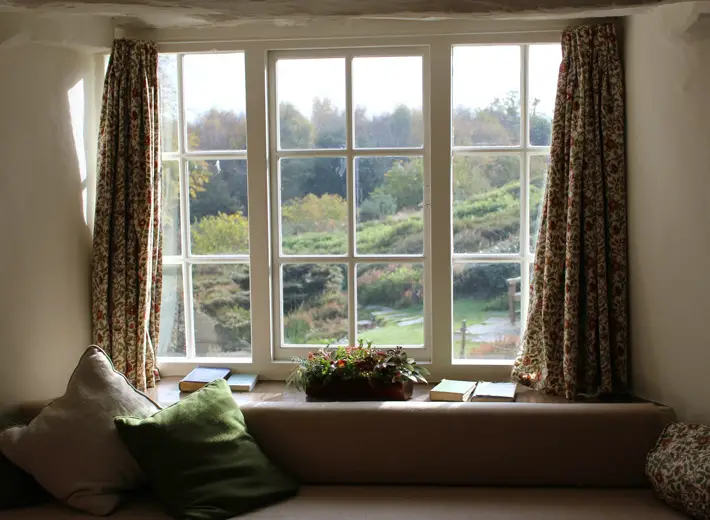A Guide To The Types Of Window Used In English Homes

Yorkshire to the hypermodern apartments of London. The English home has undergone many transformations, incorporating different elements to adapt to changing needs and styles. This article offers a brief guide to some of the most popular kinds of window design found in English homes, including the innovative use of composite PVC window shutters.
Casement
Casement windows are usually side hung, meaning that they open sideways. They are one of the most popular kinds of windows incorporated into new build homes in England. This is partially because they are extremely practical and easy to install. The ‘casement’ is a UPVC frame that surrounds and insulates the window pane or panes. This makes casement window frames perfect for installing double or triple glazing in. Almost 90 percent of UK homes have some form of double or triple glazing. Double glazing helps to prevent heat transfer from a house and keeps heating costs down. The choice between double and triple glazing is usually down to just how insulated a home needs to be. Visit site to find out more about double and triple glazing installation.
composite PVC window shutters
Sash
Sash windows are prevalent in many older homes in England. They consist of two panes fitted to vertical runners. If a person wishes to open or close a pane then they need to slide it up or down the runners. This design is practical but cannot be fitted with double glazing and so has fallen out of fashion in recent years. Some London sash windows have ornate screw type locks that are fashioned from burnished brass. The oldest surviving sash windows are found in England. They date from the 1670s and were installed in the homes of wealthy merchants and aristocrats that could afford more than one pane of glass. Interestingly, windows were taxed heavily in the late 17th Century, which led to a decline in the amount of multi pane glass windows. In some parts of England bricked up windows can still be seen that bear testament to this tax induced decline. The tax was abolished after a short time, and windows were once again popular during the 19th Century.
Roof Light
Roof lights, colloquially known by the brand name ‘Velux’ are often used in loft spaces. They open on a central hinge and are perfect for installing in slanted roof spaces. They can be fitted with double glazing and make dank lofts far more habitable. They are rather expensive but can help to add value to a home by opening up a new room in the house. Roof lights are often installed as part of a more wide-reaching loft conversion. Because the vast majority of houses in England are built with slanting roofs, this kind of window is widely adopted.
Bay
Commonly found in Edwardian and mid-century houses in the United Kingdom, bay windows remain popular because of the extra space they create within a room. They project outwards, forming an external bulge and an internal bay, which is often used for seating or storage. Bay windows increase the total amount of window space in a room – giving the impression of a lighter space. Bay windows need to be incorporated into the design of a building from the outset. Jutting out of the main body of the building, they would require structural work and planning permission to be installed at a later date. When installed above the ground floor, bay windows are often referred to as oriel windows.
Modern bay windows are inspired by the very elaborate stone bays that can be found jutting out from stately homes and castles originating in the Medieval and Early Modern eras. Interestingly, medieval bay windows may have been designed so that they caught the rays of the sun for longer than a flat window. As the sun was the main way of both lighting a home and telling the time, it made perfect sense to try and increase the exposure of a room to the burning orb above.
Tilt And Turn
Tilt and turn windows are commonly installed in hotel rooms and offices. They only open to an acute angle, preventing accidents that could result from a wide-open window. This kind of window is rather unpopular: there is nothing more frustrating than being unable to fully open a window on a hot day. Much like casement windows, tilt and turn windows are often fitted with double glazing. They are attractive to large institutions because of their safety and ease of installation.
Picture
Picture windows have no opening mechanism whatsoever. They are panes of glass incorporated into a wall with no means of being removed. They are popular as internal windows in contemporary homes but have yet to really catch on completely due to their inherent impracticality in any kind of external setting. You might assume that picture windows would be cheap to install due to their simplicity, but the opposite is actually true – these windows are expensive feature objects.
Cottage
The cottage is one of the most iconic kinds of English dwelling. For many people no vision of England is complete without a squat little thatched cottage home. Cottage windows are traditional single glazed examples made of many small panels. Large panels of glass were immensely expensive to make in the days before industrial manufacturing. Homebuilders instead opted to connect many small panels together with wood or glass casements.
Shuttered
Shuttered windows incorporate wooden panels that can be enclosed over the body of the window. They originate from a time when not all windows were glazed. Shuttered windows are more common in continental Europe than England, but there are still examples to be found in the south of the island nation. In the UK, shutters are most commonly associated with Georgian houses. Shutters keep insects and intruders out and help keep homes warm in the Winter and cool in the Summer. An exquisite example of Georgian shutter design can be found in Brentford, West London adorning the windows of a Quaker meeting house.










